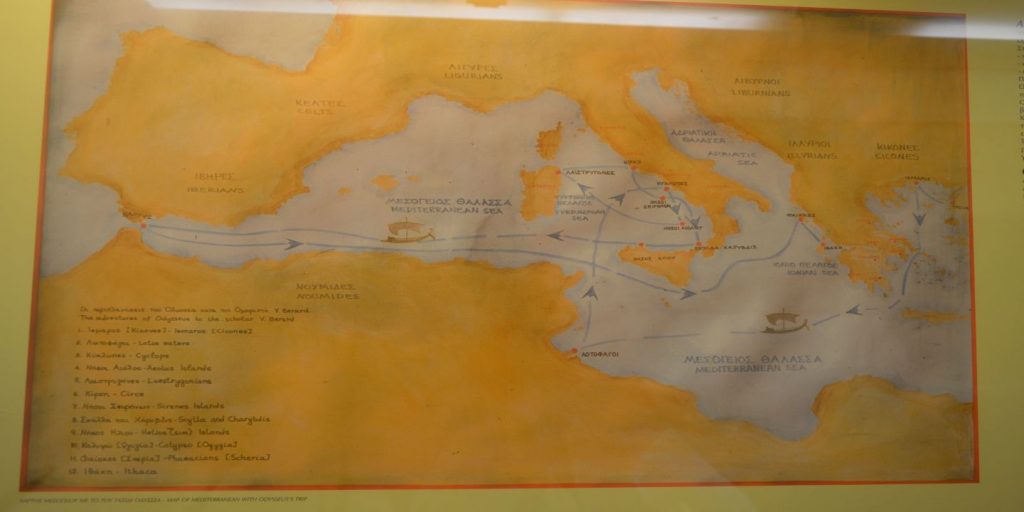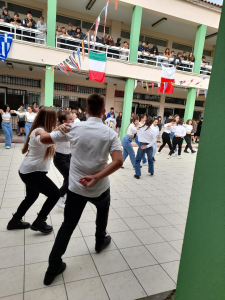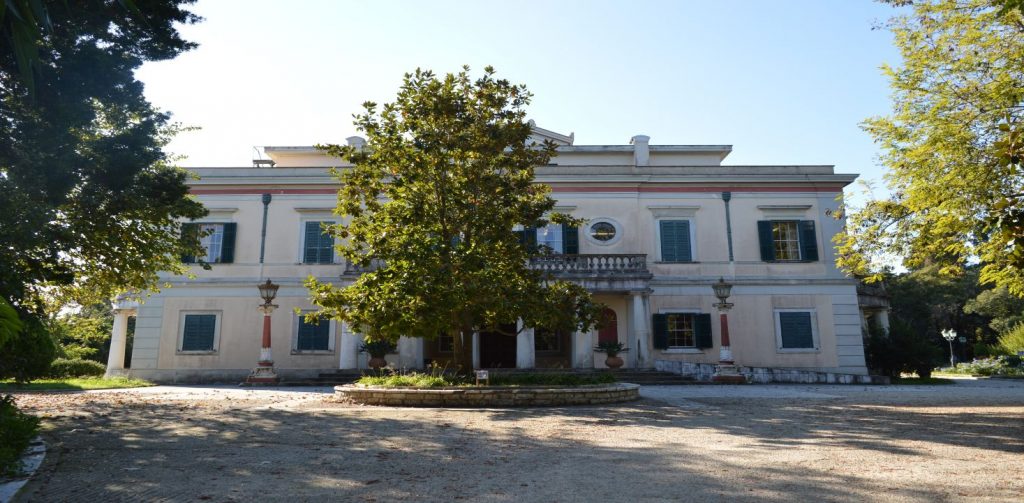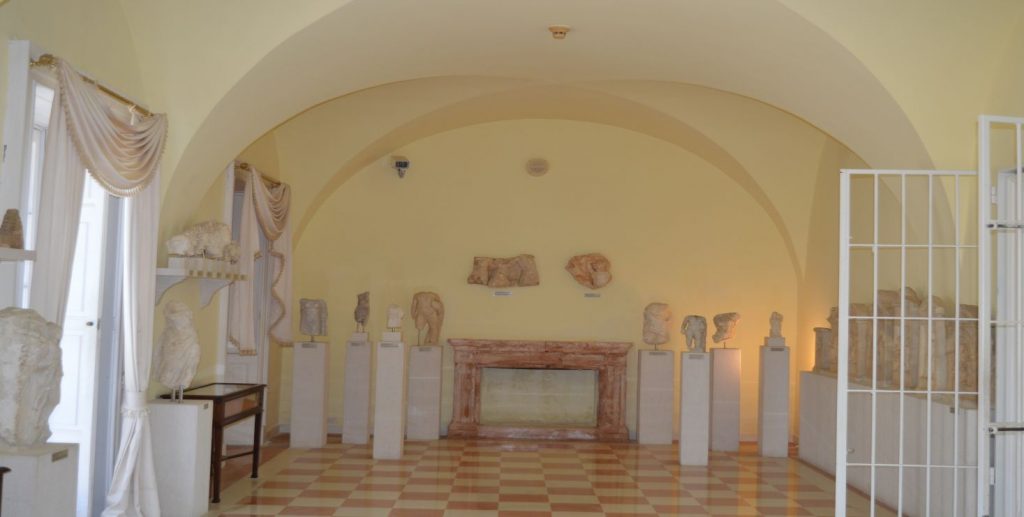Corfu, Greece
During the week 26-30 September 2022 the junior high school of Lefkimmi in Corfu hosted the partners schools.
Corfu is the crossroad of the ancient and medieval world, connecting the West with the East, carrying the weight of Homer’s epic poem and the myth of the Argonauts.
It is a blessed land admired throughout the ages.
The welcome ceremony took place in the school area, during which traditional greek music and dance ruotines greeted all the participants.
Afterwards, participants from all the countries had colaborate in groups to program a robot to follow a route, mimicking the route Odysseus took in his journey.

On the second day the participants had a guided tour in Corfu’s Old Fortress and then a sightseeing walk through the city.
Τhe Old Fortress of Corfu is a fortress built on a rocky peninsula with two characteristic hills (peaks) and is the eastern end of the city.
Today the fortress is a masterpiece of architecture and fortification art, while at the same time offering the visitor the best view of the city, the sea passage to the opposite land as well as the mountains of Epirus.
On the third day all the students participated in a theatrical event, through which unfold the daily odysseys of so many troubled souls who are looking for their peace – a better life – in the Mediterranean sea, in the place of eternal struggles for freedom and social justice.

An amazing moment, during this event, waw the musical choral performance of the unique song “Mediterranean” by Georges Moustaki

On Thirsday 29th of September the participants visited the archaeological museum of Corfu.
The exhibition based on decades-long scientific research, attempts to narrate the human adventure on the island.
The Museum’s collections comprise groups of archaeological finds as well as isolated objects from all over the island, covering the periods from the Mid-Palaeolithic down to the Roman era.

The prehistoric finds, many of which are displayed for the first time, travel visitors to the distant past of the island, from the Paleolithic to the Bronze Age. A pioneer researcher of the Prehistoric period in Corfu was the Corcyrean archaeologist Augustus Sordinas.

Of special importance among the exhibits of the Museum is the pediment of the temple of Artemis in the 1st floor in the unit “the sanctuary of Artemis”.
The temple, built of porus stone, is Doric, pseudo-dipteral, measuring 22.41 x 47.89 m., with eight columns on its short and seventeen on its long sides.
Of the sculpted decoration, the greatest part of the west poros pediment survives.
In the centre of the pediment Gorgon is depicted with a belt of snakes running with bent knees to the right in the conventional way of archaic art. Large wings are spread on her back, smaller ones sprout from her ornate shoes Her eyes are swollen, her tongue hangs from her open mouth, while thick hairs ending in serpentine heads frame this awesome face.
The wings testify her domination in the air, the snakes associate her with the earth, her face reveals that she is a goddess of death.
To the right and left are her two children, the young Chrysaor and Pegasus, a winged horse. According to legend the children were born from their mother’s blood after Perseus beheaded her without looking at her, because otherwise she would have been petrified.

On the last day the participants visited Paleopolis Museum. It is a place of culture and knowledge both for the people of Corfu and the visitors to the island. It was first opened in 2001.
On the first floor, there is an exhibition of antiquities found in the excavations in the Palaiopolis area, through which the visitor can get a clear idea of the ancient city, its people and its contacts with other places
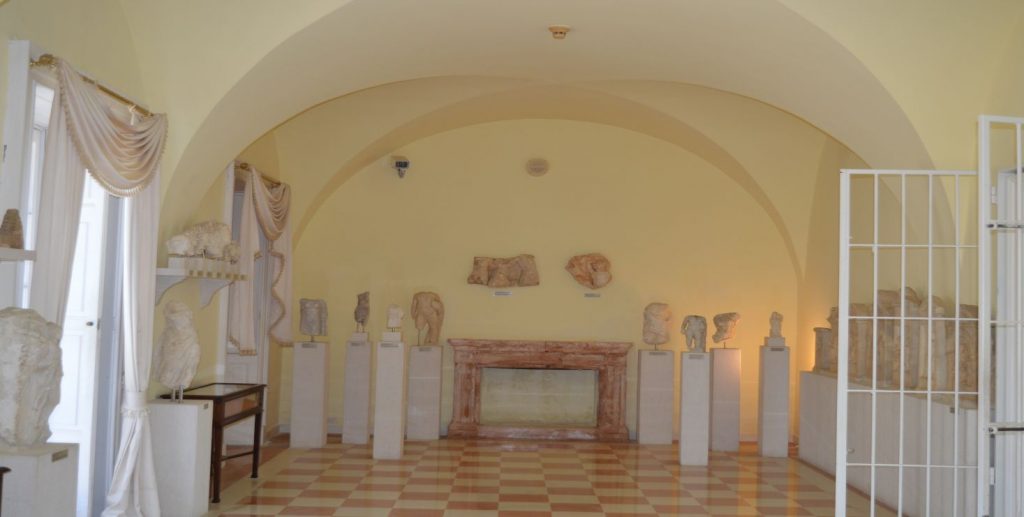
The Hall of Circumnavigation was very interesting for the project. The history of the Mediterranean is the history of its harbours. The relations between its peoples, however, were not only of a commercial character. Religions, knowledge, ideas and views all traveled along with the raw materials.
From as early as the Bronze Age there were “commercial currents” in the Mediterranean flowing between the Greek world and the West.
The sea lanes of the period were dependent on the winds and currents, the hazards of the coastline and piracy and the friendly or hostile disposition of peoples along the routes.
The finds in the excavations prove an extensive net of communication and commercial contacts between Corfu and the peoples around the Mediterranean. The map on the wall displays the travels of Odysseus, the eternal fight of man, and especially of the Greeks, with the sea, the thirst for adventure as well as the dangers in this quest, and they all underline the exploring nature of the ancient Greeks as this is shown through the colonization campaign in the 8th century. They provide valuable information about the sea routes of the time, the key commercial stopovers, and the most important commodities for exchange. Raw materials along with religions, customs, ideas and culture travel from place to place.
